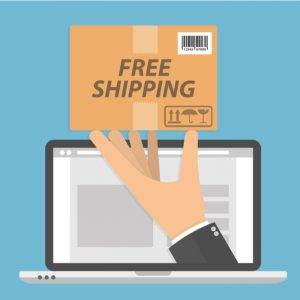
How CPG is Redefining What Convenience Means for Consumers

It’s no secret that convenience has dominated the CPG market due to generations like Millennials and Gen Z’ers that have set the standard for this term. Convenience is no longer defined by ordering Netflix DVDs online for a two-day mail delivery—it’s in the form of instant streaming and RedBox pickups. So, what exactly does it take to win over the heart of your consumers? While your product has much to do with it, the convenience factor is what will seal the deal.
Delivery Services
Fitting grocery runs into the schedules of busy consumers has become a problem of the past. According to a consumer survey by KPMG, 48% of consumers say they do some or all of their grocery shopping online, and 59% say they are planning to do so in the future. This shift to delivery services has brought a new level of convenience to grocers as it reduces time and hassle of the everyday life of a consumer.
Grocers across the U.S., including some in Canada, are partnering with delivery distributors like Instacart and Shipt to introduce this new level of convenience to their shoppers. With some of the largest grocery retailers on Instacart including Costco, Kroger and Albertsons, over half a million customers have resulted to this popular distributor to grocery shop from the comfort of their homes.
Similarly, Shipt is bringing convenience to consumers’ doorsteps by allowing consumers to “browse the aisles” by a simple scroll through their mobile app. While fresh produce, meat and packaged goods are handpicked by their designated shoppers, consumers are still in control of their orders with live updates and texting communication if adjustments to their orders need to be made.
Fast and Free Shipping
The only thing standing between a consumer and your product is, more often than not, the shipping rates and travel time. The demand for instant gratification is rising, and thanks to big-time realtors like Amazon, packaged goods are tangible at a faster rate now than ever before. Amazon’s option for prime shipping to receive a product with a two-day turnaround has left direct-to-consumer brands no choice but to step up their shipping game for their ecommerce shoppers.
These brands are finding themselves challenged with this new promise for fast and free shipping. But the battle between small purchases and high shipping rates can leave consumers stumped during their path to purchase, often resulting in an abandoned cart scenario. In fact, Statista Research reports that 63% of shoppers didn’t follow through with an online purchase for the price of the shipping rate alone.
But before you completely waive the shipping fees, consider the financial impact it will have on your brand and how to soften impact before you take that jump. One common practice amongst consumer packaged goods brands is to waive shipping fees if the purchase order exceeds a certain threshold. For example, offering free shipping if the total is over $50 or more. This not only accommodates to consumer demands but also incentivizes shoppers to spend a little extra to earn free shipping.
However, sometimes it’s not a matter of how much shipping costs, but how fast it can get to its destination. A study by Dotcom Distribution reports that 76% of online shoppers says delayed arrival of an online order would likely influence their decision to make a repeat purchase from the same seller.
But how do you integrate this consumer demand without hurting your business? One option is to give options. Just because a customer demands fast shipping, doesn’t mean they’re not willing to pay the price tag that comes with it. Allow your customer to choose their preferred method of shipping—whether that be the standard shipping at the lowest tier or express shipping at the highest. This way, consumers are satisfied, and your approach remains cost-effective and transparent with the consumer.
Shorter Path-to-Purchase
Convenience doesn’t just come in the form of priority shipping. Sometimes, it’s the ease of the purchasing path that wins over customers. The quicker they can make a purchase, the more they are willing to swipe a credit card—or in this case, hit the “pay now” button.
Today, ecommerce brands are ahead of its time, offering one-click pay, whether it’s through saved account information or a simple double-click with Apple Pay. This method saves customers the hassles of re-entering credit card or shipping information—a common issue that has resulted in 55% of abandoned carts, according to Statista Research.
Offering a safe and secure way to shorten the path-to-purchase can increase customer loyalty and trust. Customers are more likely to shop with your ecommerce if they know they can complete their order with as few clicks as possible. And having a smooth checkout experience can increase their chances of making a repeat purchase in the future.
Less Convenience, Less Clicks
Today’s level of convenience is forcing CPG brands to rethink the way they deliver their product and how it will affect the relationship between brand and consumer. Though foot traffic has decreased due to the rise of speedy delivery services, it’s far from slowing down sales. Consumer behavior proves that the less clicks (and shipping costs) it takes to complete their purchase, the more likely they are to get to the finish line of the consumer journey. And if you’re not keeping up with these face-paced convenience trends, then it’s time to take your marketing strategy to the drawing boards.
